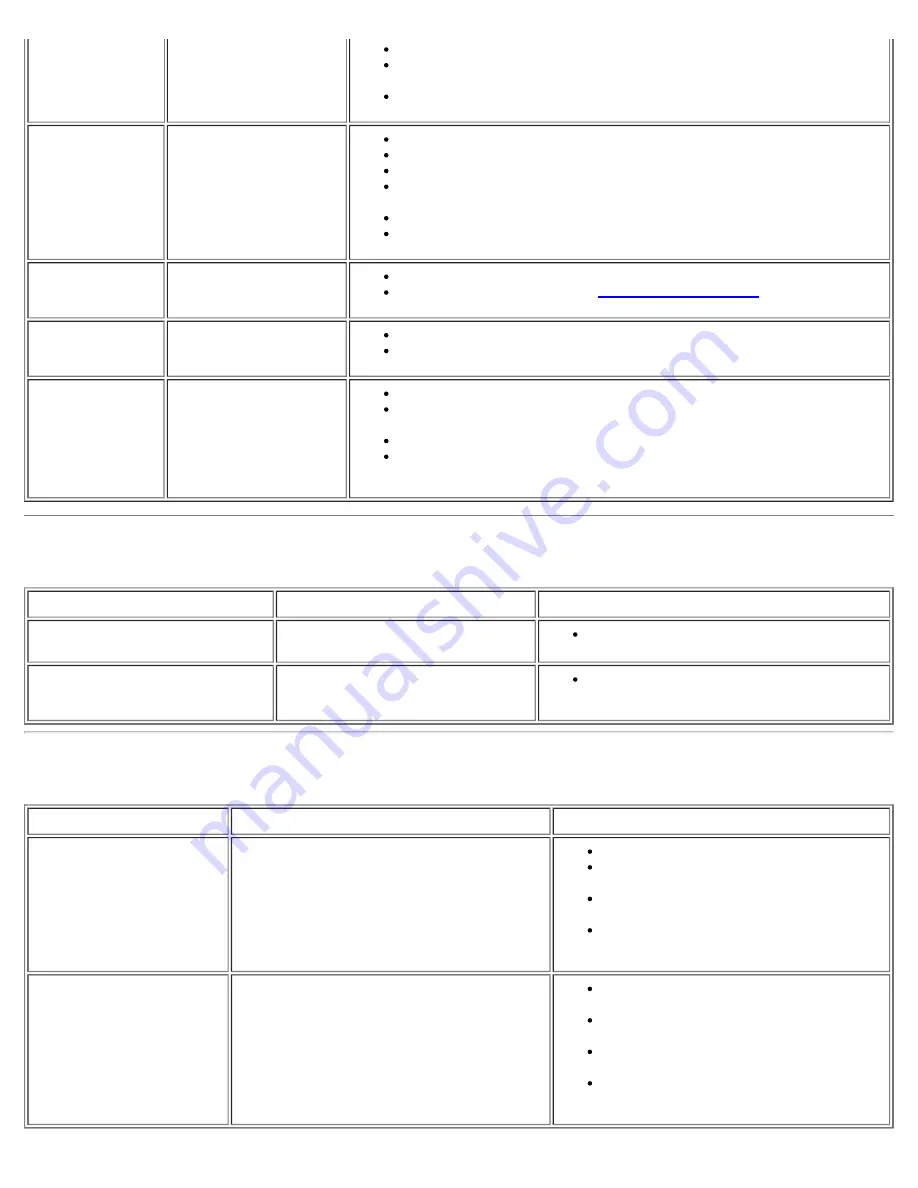
Adjust Phase and Clock controls via OSD
Perform monitor self-test feature check and determine if these lines
are also in self-test mode
Check for bent or broken pins
Sync Problems
Screen is scrambled or
appears torn
Perform monitor reset
Push Auto Adjust button
Adjust Phase and Clock controls via OSD
Perform monitor self-test feature check to determine if scrambled
screen appears in self-test mode
Check for bent or broken pins
Boot up in the "safe mode"
LCD Scratched
Screen has scratches or
smudges
Turn monitor off and clean the screen
For cleaning instruction, see
Caring for Your Monitor
.
Safety Related
Issues
Visible signs of smoke
or sparks
Do not perform any troubleshooting steps
Monitor needs to be replaced
Intermittent
Problems
Monitor malfunctions on
& off
Ensure monitor is in proper video mode
Ensure video cable connection to computer and to the flat panel is
secure
Perform monitor reset
Perform monitor self-test feature check to determine if the
intermittent problem occurs in self-test mode
Product Specific Problems
SPECIFIC SYMPTOMS
WHAT YOU EXPERIENCE
POSSIBLE SOLUTIONS
Screen image is too small
Image is centered on screen, but
does not fill entire viewing area
Perform monitor reset on "All Settings"
Cannot adjust the monitor with
the buttons on the front panel
OSD does not appear on the screen
Turn the monitor off and unplug the power
cord and then plug back and power on
USB Problems
SPECIFIC SYMPTOMS
WHAT YOU EXPERIENCE
POSSIBLE SOLUTIONS
USB interface is not
working
USB peripherals are not working
Check that your monitor is powered ON.
Reconnect the upstream cable to
your computer.
Reconnect the USB peripherals
(downstream connector).
Switch off and then turn on the monitor
again.
High Speed USB 2.0
interface is slow.
High Speed USB 2.0 peripherals working
slowly or not at all.
Check that your computer is USB 2.0
capable.
Verify USB 2.0 source on your
computer.
Reconnect the upstream cable to
your computer.
Reconnect the USB peripherals
(downstream connector).
















































